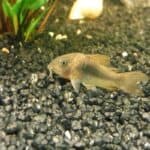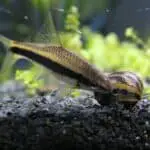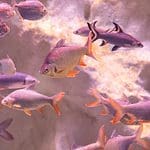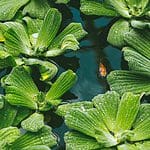The upkeep of an aquarium requires more than merely filling a tank with water. Appropriate monitoring of water parameters regularly is critical for the well-being and health of the fish. This is no easy task for the inexperienced aquarist, but with some knowledge and dedication, you can ensure your aquatic environment remains healthy and thriving.
What exactly do we mean when we talk about aquarium water parameters? It refers to the physical and chemical properties of the water. These include pH, temperature, hardness, etc.
This article explains why these parameters matter and what levels they should be.
Which Water Parameters Are Most Important For Aquarium Water Quality?
Something that aquarists often don’t realize is that they’re dealing with chemistry on a day-to-day basis. Many important chemical concepts need to be understood when maintaining a successful aquarium. If you’re new to fishkeeping, don’t be intimidated; understanding aquarium chemistry isn’t as complicated as it may seem.
In this guide, we thoroughly explore some chemical concepts used in aquariums. Through this knowledge, you will be able to manipulate the water quality of your tank to exceed the requirements of the species you keep, as well as carefully select compatible species for the community aquarium.
Some of the countless parameters we can measure and manipulate in an aquarium are the most important to understand. The main ones, practically everyone has heard about, are temperature and pH; the others (even though they are just as important) are less used and are typically applied when trying to keep more sensitive species in the aquarium.
Temperature
As for temperature, we divide freshwater fish into two categories: Coldwater Fish and Tropical Fish.
Tropical fish live in the tropical zones (places of the globe that are geographically located between the tropics) of the planet. It is practically the same as saying that they are warm-water fish. These fish inhabit waters with a temperature of 75 to over 86 F. This category contains fish such as Guppies, Cichlids, and Bettas.
Cold water fish, such as Carp and Goldfish, inhabit water with temperature up to 74 F.
Fish are ectothermic animals, which means they regulate their internal temperature through the environment’s temperature.
As much as all freshwater species can withstand a temperature variation, each species depends on specific conditions. The place of origin of the species dictates these conditions.
Maintaining the correct temperature is essential as this parameter directly influences animal and plants’ metabolic rate and homeostasis (physiological balance).
In practical terms, very high temperatures accelerate the metabolism of beings. On the other hand, very low temperatures decrease this rate, hindering feeding, immunity, reproduction, and development.
Different species will only be able to stay healthy within the proper temperature range. Hence the importance of always maintaining the ideal temperature for freshwater aquariums with the help of heaters.
The most reliable way to measure your aquarium’s temperature is to use a digital thermometer.
pH
The pH indicates whether the water is neutral, acidic, or alkaline.
Explaining pH without going into chemical terms is tricky. Simply put, the water molecule H2O dissociates into the ions H+ and OH-. These ions then react with other components dissolved in the water, leaving excess H+ or OH- in the water.
The water is acidic when we have an excess of free H+ in the water. The opposite happens when we have the presence of the OH- ion, which is when we have alkaline water. When these ions are balanced, that is, in equal proportions, we have so-called neutral water.
We can quantify pH on a scale. The scale should be logarithmic and goes from 0 to 14, with 7 being the neutral water value. From the neutral value, we influence acid pH below 7 and alkaline pH above.
It is vital to note that the scale of this parameter is logarithmic. This means that a pH of 5 indicates water is 10 times more acidic than a pH of 6. This way it is clear that any slight variation in its value will significantly impact the water and will undoubtedly influence the balance of fish and plants.
This is the main reason we always have to change pH values slowly. Large abrupt changes can cause physiological shocks and death. The idea is to modify the pH daily by around 0.3 points, so the fish can adapt to this new condition.
As with the other parameters, the ideal value for each species is imposed by its place of origin. These values should be imitated in our aquariums. And species kept with other species that share the same pH type.
To measure the pH, use colorimetric tests. The pH exhibits a very important relationship with the toxicity of ammonia. The higher the pH, the more toxic ammonia will be.
Water Hardness (GH)
This parameter is measured through the amount of calcium (Ca++) and magnesium (Mg++) ions dispersed in the water. These minerals come from certain geological conditions of the place, such as the composition of rocks and soil.
The unit commonly used to measure hardness is degrees of hardness (DH). To measure the GH we use tests suitable for aquariums. These tests measure the amount of Calcium Carbonate (CaCO3) in the water. Each degree of hardness is equivalent to 10 mg of calcium oxide (CaO) per liter of water.
The concept of hardness is important for the maintenance and reproduction of fish species, mainly invertebrates. The vast majority of invertebrates use hardness to compose their external skeleton.
Carbonate Hardness (KH)
It is impossible to explain KH without going back into basic chemistry.
This hardness is relative to the buffering capacity of the water. It is the measure of bicarbonate (HCO3-) and carbonate (CO3–) ions in water. Since KH tests cannot be unique to carbonate and bicarbonate ions, they measure the alkalinity of the water, which is mainly due to the presence of these ions in the freshwater aquarium.
Alkalinity is a measure of the total buffering capacity of acid. That is, of all anions that can bind to free H+ ions in the water, thus preventing the pH from falling. In the freshwater aquarium, the terms “carbon hardness”, “buffering capacity”, and “alkalinity” are used interchangeably.
When the aquarium has some carbon buffering capacity, bicarbonate ions will combine with excess hydrogen ions to form carbonic acid (H2CO3) which will slowly dissociate into CO2 and H2O.
Over time, as carbon ions are used up, the buffering capacity will decrease, and steeper drops in pH should be noted.
Ammonia
There is one parameter that stands out from all the others; ammonia. It’s the dreaded killer in aquariums.
Ammonia is a compound that arises through decomposing organic matter (such as leftover fish food, plant pieces, etc). In addition, fish excrete ammonia through feces, urine, and breath.
Despite being a vital compound for life, in aquariums, ammonia can be toxic. Its toxicity depends on several factors, such as temperature, pH, etc.
Ammonia is super toxic to aquatic beings. This compound is water soluble, dissolving quickly in all aquarium water. The effects are many, and at suboptimal levels, cause mass death to all the tank’s inhabitants.
The filtration system in aquariums works based on ammonia. Ammonia is the main food for filter bacteria, which breaks it down into other, less toxic nitrogenous compounds.
The measurement is performed through colorimetric tests, which are compared with other parameters in a table, thus claiming their toxicity at that instant.
Nitrogen Compounds
The bacteria’s breakdown of ammonia generates other nitrogen compounds, such as nitrite and nitrate. Nitrite is the result of the action of nitrifying bacteria that oxidize ammonia. Nitrate is also the form of nitrogen assimilated by plants.
Even though it is less toxic than ammonia, nitrite still has some toxicity, so it must be controlled. We can also measure it with colorimetric tests. Like ammonia, nitrite enters the fish’s body through the gills and can accumulate in the body.
The maximum limit of this compound in the aquarium is 1.0 ppm. Above this value, nitrite becomes toxic.
The bacteria then break down the nitrite into nitrate. Nitrate is less toxic than ammonia and nitrite. But the effects can be quite concerning when levels become too high in an aquarium.
Unfortunately, many aquarists are unaware that nitrate cannot be removed or oxidized in an aquarium. Instead, one must actively remove it through water changes.
Phosphate
The breakdown and decomposition of organic matter also generate phosphate. It is the form of phosphorus that is used for plant nutrition.
This element in freshwater aquariums still needs to be discussed and, erroneously, attributed to algae spikes. However, in coral aquariums, phosphate is an essential element that will dictate your corals’ health.
Chlorine and Chloramine
These elements are placed in the water supply network and are toxic to fish, especially chloramine. There are colorimetric tests to assess the presence of these compounds in water.
Fortunately, it’s easy to remove them using a water conditioner.
Silicate
Silicates are a big problem in saltwater aquariums as they will bring on outbreaks of diatomaceous algae.
In freshwater aquariums, silicates are rarely a problem but can cause brown algae outbreaks.
How Aquarium Algae Can Affect Water Parameters
Algae affect the water in an aquarium in the same way that plants do. Algae use nitrates and phosphates to nourish themselves, as well as the levels of oxygen and minerals in the water, which will be consumed during photosynthesis.
Read also: 25 Best Algae Eaters for Your Freshwater Aquarium
How Rocks Can Affect Water Parameters
The region’s geology largely defines water parameters in natural locations. For example, adding alkaline rocks to your aquarium will release minerals that will make the water more alkaline and likely to have a higher pH.
Additionally, rocks can have a large amount of silica, which will gradually be adsorbed to the water in the tank.
Aquarium Water Testing: How To Check Water Parameters
Checking the parameters of your aquarium is an easy task. Nowadays, you can find aquarium water testing kits in all aquarium stores.
These kits contain reagents that must be mixed with aquarium water and then compared with tables (available from the manufacturer). Depending on the color, you will get a result.
With the advancement of technology, digital probes and testers are now widely available, giving results immediately and in precise numbers.
Proper Water Parameters for Home Aquariums
For home aquariums, the ideal parameters depend on the fish we are keeping. Therefore, you must always reproduce the parameters that occur in the place of origin of the species.
What Kind Of Water Parameters Do Betta Fish Need
Bettas are tropical fish; they need water with a high temperature of around 80 F. The pH should be between 6.6 and 7.4, and the hardness between 5 and 14.
For any animal species, the ideal is that nitrogen, phosphate, and silica levels are always at 0.
Water Parameters for 5 Popular Aquarium Fish
In this section of the guide, we will put into practice everything we have learned and demonstrate how you should use your knowledge about parameters to adapt the species you want to keep.
For all fish listed here, the ideal levels of ammonia, nitrite, and nitrate is 0, as well as phosphates. In addition, chlorine and chloramine must always be at 0.
Bettas
The ideal temperature for Betta is between 71 and 86 F. The ideal pH for aquarium strains is around 7. GH at 3dGH and KH at 4dKH.
Cherry Shrimp
The ideal temperature for cherry shrimps is 65 to 75 F. pH 6.6 to 7.6. GH from 4 to 8 dGH and 3 to 12 dKH.
Guppies
The ideal temperature ranges between 72 and 82 F. The pH ranges from 6.8 to 7.6. General hardness from 6 to 8 dGH and KH from 4 to 8 dKH.
Neon Tetra
For Neon Tetras, pH should be between 6.6 and 7. Alkalinity should be kept from 1 to 2 dKH. Temperature between 75° and 80° F and GH <9 dGH.
African Cichlid
African Cichlids live in high pH, from 8 to 9. Temperature from 74 to 80 F. 9 to 18 dGH and 10 to 14 dKH.
References
Vajargah, M. F., & Yalsuyi, A. M. (2022). An Overview of Ammonia Poisoning in Aquariums. ENVIRONMENTAL SCIENCES, 3(5-MAY).
Roberts, Helen, and Brian S. Palmeiro. “Toxicology of aquarium fish.” Veterinary clinics of North America: exotic animal practice 11, no. 2 (2008): 359-374.







